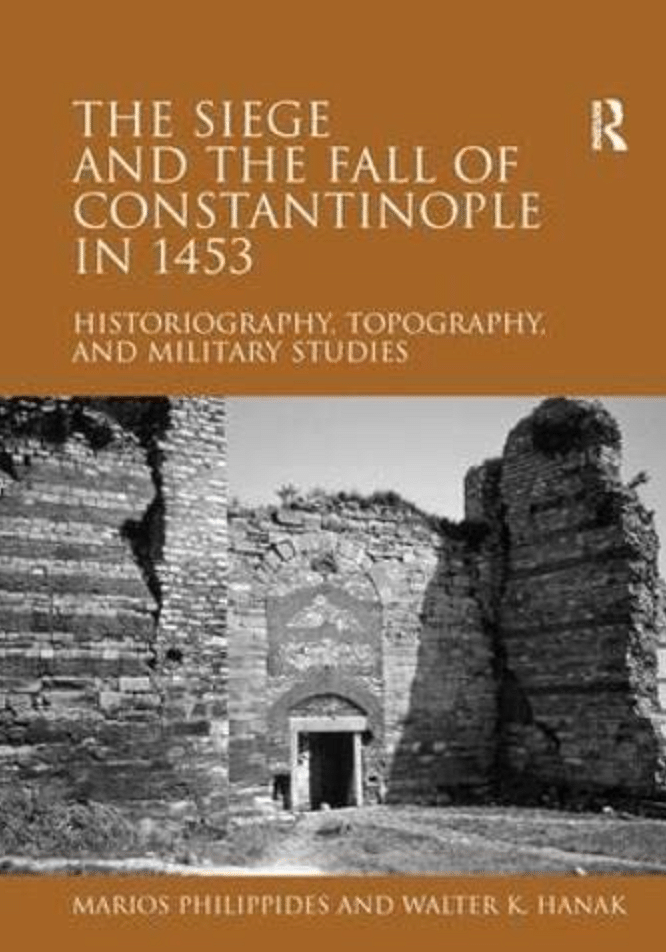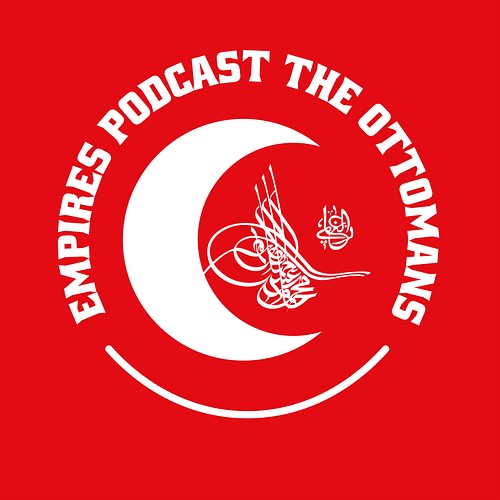
Companion Blogpost for Episode 25 part 1 (will be released Tuesday November 21, 2023)
Feel free to email Frank, empiresofhistorypodcast@gmail.com
Listen to the Episode https://ottomanempirepodcast.com/episode/fortress-of-doom-the-conquest-of-constantinople-part1-episode-25
Work on the Fortress of Rumelihisari or Bogazkesen (Translation: “Strait-Cutter) began on April 15, of 1452. Sultan Mehmed II persuaded his three top Viziers: Sadrazam Candarli Pasha, Pagans Pasha, and Sara Pasha to pay for the fort’s construction; as a result a tower was named for each.
Note: All pictures/images Public Domain unless otherwise noted**

The three Viziers, were very significant to the Ottoman Empire. Hailing from the “Old Guard” of the Turkish families, these powerful elites, such as the one Candarli was from, held the empire together even after Sultan Bayezid’s disastrous defeat in 1402 at the hands of Timur.
However, by the reigns of Murad II and his son Mehmed II time was running out for the Old Guard. Conservative in their military and strategic outlook, (not a good combination in the mid-15th Century) they continually thwarted military reforms and advocated for the Ottoman Empire to expand into the wider Middle East and leave Constantinople for a later time.
The three top members of the Old Guard, publicly being forced by Sultan Mehmed II to construct his fort, showed great power. It also portrayed their willingness to coexist with the new Sultan. Mehmed was seen as a season of change, and a new day was about to dawn for the Empire.
If you check out the layout of the fort (image below) you can see it’s unusual geometric layout.. a departure from then-contemporary military architecture of the time. Lore has it that Sultan Mehmed II along with members of the heterodox Bektashi Islamic mystical order, poured rams blood into the mortar for the first layers of brick and stone. Then, his engineers consulted with seers and oracles to design the layout of the fort to reflect the sacred numerology corresponding with Mehmed’s secret Bektashi name.
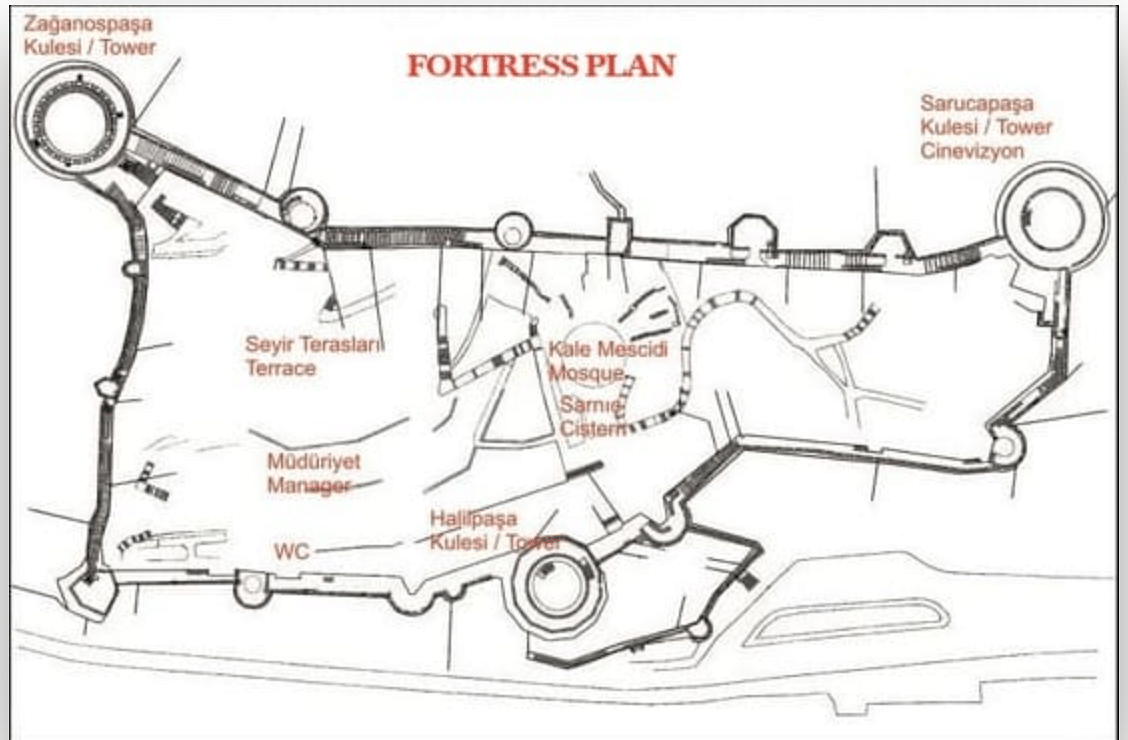
This factoid, and old historical legend about the Rams blood, indicates the Ottoman elite had had not shook their Turkic shamanistic beliefs from the Steppe just yet.
Fort Rumelihisarı was tactically positioned to cut off grain, troops, and logistical support from arriving to the City of Constantinople from the Genoese colonies along the Black Sea region (Genoese colonies pictures below).
 Genoese Colony Map: Source: reddit (Reddit is actually very accurate in this area), User: r/europe gogo_ybari-chan Reddit Link of Map
Genoese Colony Map: Source: reddit (Reddit is actually very accurate in this area), User: r/europe gogo_ybari-chan Reddit Link of Map
A layout of Constantinople is provided (image below). From this vantage point you can see that Fort Rumelihisar was positioned north and could stop Genoese reinforcements.
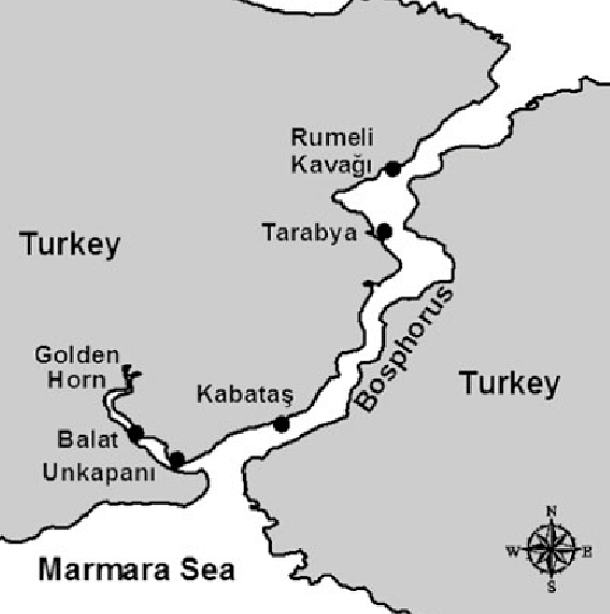
Fortress Rumelihisarı, or as I prefer “Bogazkesen” spans over 30 acres. It was in continuous use for centuries, until the late 19th century when it was finally retired from duties. It’s architecture, as you can see from the pictures, stands as a monument to the infusion of Greek and Turkish cultures that formed the basis of Ottoman society. In future episodes, we will hear about ambassadors and their families to the Sublime Porte being locked up in “The Seven Towers” and it is this fort they were specifically held in custody when the Empire was at war.
Today, you can still visit the fortress. Turkish Republic converted it into a museum in the 1920s. If you arrive in Istanbul you’d take a trolly ride to the Golden Horn, and from their a ferry transports tourists to the fortress.
The scenery from the Candarli Tower inspired poets and writers going back centuries and some fine examples of paintings can be found in local Turkish Etsy shops online.
It was recorded that Murad IV loved to visit the towers in Autumn as he was an avid bird watcher. As the Rumelihisari fortress, and it’s grounds, became a bottle neck of bird migration from all over Europe. Today, bird watchers can obtain tickets to spend the night and gain access to forbidden (and quiet) parts of the fort devoted exclusively to birding.
… In Episode 25 part 1 I mention the great engineer and architect, Orban, whom we know very little. A picture below is a representation of one of the gigantic cannons he constructed for Mehmed’s siege of Constantinople.
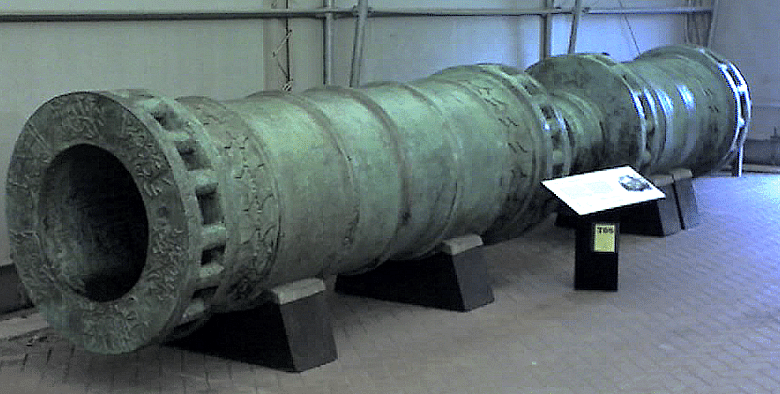
Episode 25 Part 1 could not be possible without the generous help from Soren Narnia, of Knifepoint Horror podcast. You can find him here: Knifepoint Horror
Also, please check out the work of authors Marios Philippides & Walter Hanak. Their book "The Siege and the Fall of Constantinople in 1453" was essential in developing the show you can pick up a copy here: "The Siege and the Fall of Constantinople in 1453"
